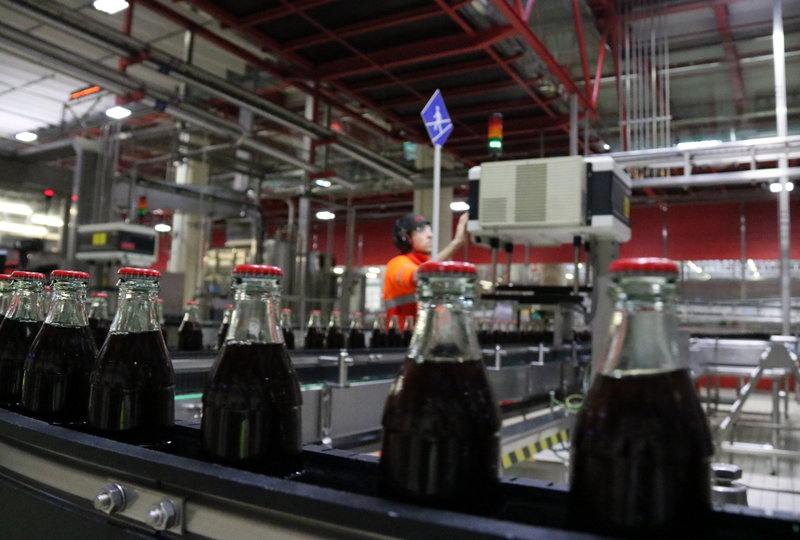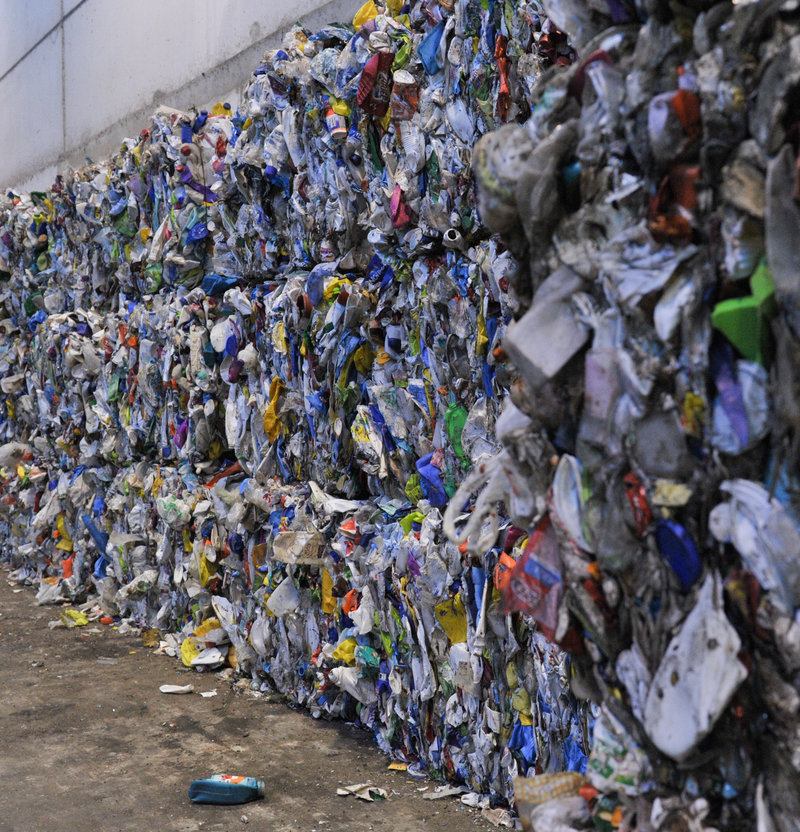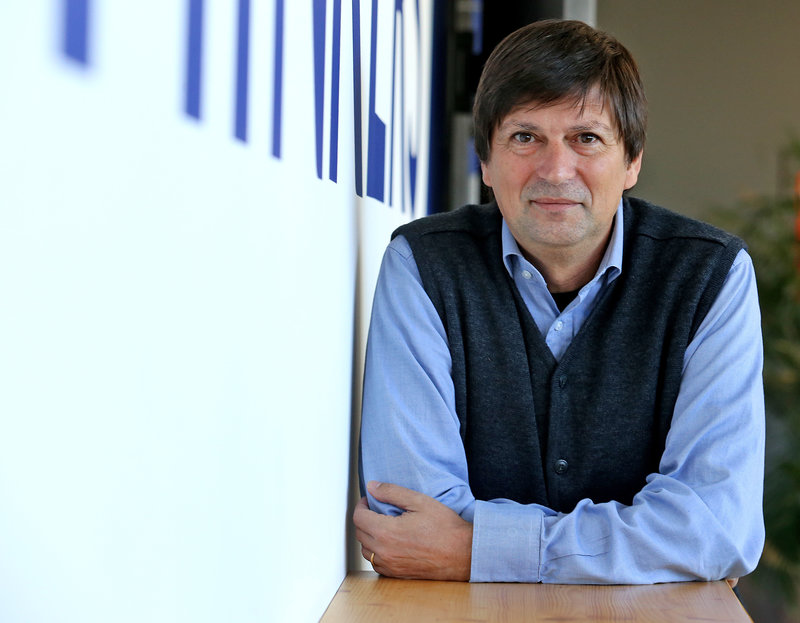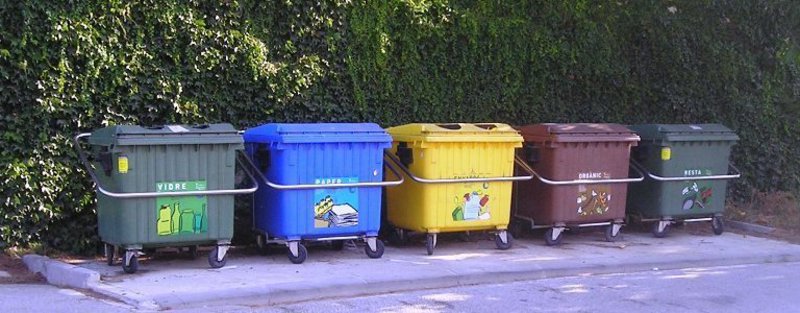Goodbye to single-use plastic
Should we return bottles? Is it always better to separate our rubbish? Our special environmental report has all the answers...
We are very much accustomed to the idea that two plus two equals four in mathematics and in any other field. Applied to recycling, this means that, as citizens, most of us have some knowledge of the subject and try to put it into practice as far as possible. We have been told to separate waste, and we do. And which container everything goes in, and we try to get it right. But not everything is black or white. Let’s take an example. If we did a survey, surely most of us would agree that the less packaging the products we buy have, the better. Think of a bag of cupcakes. In the supermarket across the road we can find half a kilo of cupcakes all together in a bag. Next to it we see the same bag but with muffins individually wrapped. Which is the best option for the environment? It depends. Really? If there are four people who eat cupcakes at home, the bag with them all together is a good choice. But that’s not true if a person lives alone. What has a greater impact on the environment, individual plastic bags or having to throw away a bag of cupcakes because they went off and can no longer be eaten?
The environmental impact of food waste is much higher than that of packaging, about 10 times more in fact. The data that help us make decisions that are most respectful of the environment at all times is very much related to what is known as the life cycle. And Life Cycle Analysis (LCA) makes a great contribution in this respect. Take a pen, for example. We can study how much it pollutes while we use it, or when it is manufactured, or when it becomes waste. Or we can study it according to its life cycle, in its entirety, from when it comes into being until its useful life is exhausted. The ESCI-UPF (Pompeu Fabra University International School of Commerce) UNESCO Chair of the Cycle of Life and Climate Change has experience in employing this global vision to find solutions. In fact, it is a world pioneer in this Unesco field, and has participated in numerous projects, including international ones, using life cycle analysis (LCA), eco-design, green purchasing and environmental communication (eco-labelling) of products, carbon and water footprint, governance in environmental management and the integration of social and economic aspects within environmental assessment. The Chair’s mission is to promote research, education, the establishing of collaboration networks and generation of documentation, all aimed at the sustainable development of products and processes in the international arena. One of the founding goals of the ESCI-UPF, to which the Chair belongs, is managing the environment and sustainability. It is new that a school of commerce includes this approach in its statutes. In addition to the Unesco Chair, at the ESCI there is also the MANGO Chair of Corporate Social Responsibility and RISE (Research in International Studies and Economics). Diverse perspectives that, when brought together, can shed much light on the present and future of the planet, and on the sustainability of our actions.
Return or non-return
The three teams under the charge of Chair director Pere Fullana have carried out a very up-to-date and far-reaching study: the Ariadna project, which addresses the deposit refund system (DRS). It is a proposal debated by political institutions to promote recycling and reduce the volume of packaging. Older readers will remember how just a few years ago empty receptacles were returned to stores for their reuse. The current message behind DRS is a confused one, since it is not for reuse, but for recycling, as is currently the case with the Punt Vert system here in Catalonia. The fact is that the results of the study, presented a few months ago, do not recommend the introduction of this return system for packaging. Is that a surprise? “Our studies shock people, because we seek out all the information and integrate it. We don’t give a partial view with our research, but rather a systematic one,” explains Fullana. The work, which is now on the politicians’ table – and accessible to everyone on the web – investigates the current system and what it would be like to implement a system to return only some receptacles. “Ariadna is one of our biggest projects, because it has a lot of repercussions, political, economic and social,” Fullana says. They have taken into account various environmental impacts: global impact-global warming, the use of natural resources, impact on the quality of ecosystems and water, and impact on human health. Fullana explains: “All the indicators worsen by 10% with the return system, except in the use of resources section. Why are they getting worse? Due to inefficiency associated with duplication. Now there is a system that is responsible for all packaging. If you start a new system for a certain type of packaging and materials – those that generally have more economic value – someone will have to take responsibility for the rest of the packaging. Who? The current system. That is, there would be two systems.” Having these two systems would have more of an environmental impact, not to mention the economic impact on society via the increase in product prices (the increase in costs for the distribution chain would, as always, end up affecting the price), fees or taxes, and unreturned deposits. The study is posted on the ESCI-UPF website and there is a form to leave contributions or comments. Fullana says: “We want people to download it and criticise it. It’s the only way to improve it.” They also do other studies. For example, participating in the Zero Cabin Waste project, with partners Iberia, Ecoembes, Gate Gourmet (GG) and Ferrovial. What catering waste does an aircraft generate? How can it be managed? Fullana explains: “When you board an aeroplane, if it’s a medium or long-distance flight, you will have breakfast, lunch, a snack... If you look at it, you’ll be given several products, all atomised and in their own packaging. Of everything they give us, how much do we eat? How much goes off?” That is what the research is about. And how to treat waste better. Apart from collecting data, the research must provide solutions. To get an idea: Iberia’s flights generate 4,500 tonnes of waste annually. The aim is to manage this waste more effectively. And solutions are also sought for waste on non-EU flights, which cannot be recycled due to the risk associated with possible diseases. There are many interesting topics in the study, one being disposable plastics, which the European Commission wants to eliminate. A good example of this is cutlery on aeroplanes. Most of the environmental impact of an plane is directly related to weight. Weight and fuel consumption go hand-in-hand. What affects the weight affects 95% of the total environmental impact of an aeroplane. “If we replace (plastic) cutlery that weighs little with heavy cutlery (steel), we are adversely affecting the environment. The solution, in environmental terms, can be worse than the problem. Other eco-design strategies are possible.”
Food waste
The European Week for the Prevention of Waste was held in the EU until November 25, which included several actions. The Chair organised the conference “Integral Strategies for the prevention of food waste”, with two concrete examples: the Zero Cabin Waste project, which we have just mentioned, and the Ceres-ProCon project. The latter, which is also underway, studies food production and consumption strategies to mitigate climate change. It also aims to do science with and for society. “In our country, most people make decisions in good faith and according to what they have been told, but awareness regarding the environment is low. I don’t mean that environmental education at school is deficient. Children often teach their parents. But it is quite another thing that these children then become activists, which is what we want. We should not be sympathisers, but activists.” We’ve been told: “Recycling more is better than recycling less.” Fullana continues: “In theory, everything that leads to more recycling is good, but what we say is that it depends. Sometimes it’s advisable to recycle less because the processes associated with that additional percentage are so expensive, also in environmental terms, that it does not compensate.” An optimal balance is sought. “Keep changing systems to make the whole life cycle better. Use the best strategies, which are sometimes not to recycle.”
Diet and the environment
The amount we contaminate depends on what we eat, and this is being studied, as the director explains: “We’re studying various diets and dishes. There is one thing that is common to all systems, not just food, and that’s prevention. We certainly eat more than we should eat. We certainly waste more food than we should waste. We can also talk about the product itself. We know, for example, that beef has much more impact on climate change than chicken. Apart from the ingredients, we also know about cooking methods. If we boil food with the pot covered on a low heat the energy savings are huge.” Nowadays, for example, we question whether processed foods are good for us. Again, it depends. “Let’s take it to the extreme: you go walking for a week. Will you take eggs with you to make an omelette? It takes a series of processes to result in food waste. You take the finished product with you, cooked elements that don’t go off for several days. That’s the extreme. There are some processed foods that don’t go off so quickly and have better nutritional qualities, ones that complement a particular diet, like one for celiacs, for example.” In summary, it’s not so simple then. “What is important is that once you learn that one option is better than another you become an activist. You go ahead with it and make sure that those around you join in.” It’s impossible to know everything. There are so many areas where food has an environmental impact. “We can’t expect ourselves to know everything, but to learn new things every day, to have ecological intelligence.” Many products are often advertised as “eco”. We have our doubts. Alba Bala, who is responsible for the line of research in waste management, says this: “Fifteen or twenty years ago there may have been more companies making this claim, this green marketing, to sell more. It was hard to verify. Today, however, things have changed a lot. We have social networks that people are very active on, and when a company makes a claim and it’s not true... The introduction of social networks, of new technologies, has also resulted in fewer companies sending a message that is not real on the market.
Complex decisions
Fullana shows some images on a screen: boxes for transporting fruit. Cardboard, wood and plastic. The first is recyclable, the second renewable and the third, reusable. Which is most respectful of the environment? Which is best? It depends on how it’s used. If the box is full of tomatoes and must go from Almeria to Finland, on a direct route there and back, and using plastic boxes, which weigh more, when they come back empty they have an environmental impact. It’s better to use cardboard boxes, which can be left in Finland and recycled. However, over shorter distances, the best option is reusable plastic. Between the two extremes, there are different solutions. “We shouldn’t be making generic declarations or decisions without thinking about it first. We’ve been to various parliaments to explain it, and pointed out cases where it’s been done wrong; for example, in the case of using olive oil in restaurants and hotels.” It was decided that oil would be sold in non-reusable bottles that could not be refilled. “We went from a drum and a glass bottle that could be refilled to having 25 bottles. It was done to protect the consumer, but of course, you have to know what consequences changing the system has on the environment. In this case, the impact on climate change is almost doubled.” If sustainability is the aim, he concludes, it should be a factor that is taken into account in all political decisions.
feature
feature
The Chair
Behind the idea of creating the ESCI-UPF Chair for the Cycle of Life and Climate Change is the Environmental Management Research Group (GiGa), founded in 2004 by Pere Fullana. Its mission is to expand and exchange knowledge regarding the life cycle and its application for the prevention of climate change on a more international scale. In 2011, UNESCO made GiGa its Chair for the Cycle of Life and Climate Change. Pere Fullana – pictured above – is the director of the Chair. He has participated in hundreds of research studies addressing environmental management, life cycle analysis, eco-design, clean technologies, the list goes on. Among other awards, he has been recognised with the most relevant Scientific Contribution Award by the World Cycle of Life Congress (LCM, September 2009).
Observers at the 24th Climate Summit
The 24th Climate Summit (COP24) of the United Nations Framework Convention on Climate Change (UNFCCC) was held in Katowice, Poland, from December 3 to 14. It had around 30,000 participants from almost 200 countries. Delegates from the ESCI-UPF UNESCO Chair for the Cycle of Life and Climate Change and Pompeu Fabra University (UPF) also attended as accredited observers. The theme of this edition was Changing Together, referring to the will of all the parties involved to take the necessary decisions to fully implement the Paris Agreement, approved on December 12, 2015, which establishes measures for reducing greenhouse gas emissions from 2020 onwards to limit increases in the average global temperature of between 1.5ºC and 2ºC.
What’s better?
“The rubbish must always be separated?. And at the Chair they say: “It depends. We have methods to demonstrate things, such as reducing it to the absurd,” explains the director. Imagine a hermitage and two huts on top of a mountain. Several trucks go up there. “They go up half full and come down with a few extra kilos in them. There?s a huge difference in using one truck than using four. What you gain from separating rubbish is much less than what you lose with four trucks going up and down the mountain. It’s one extreme, another would be the one of the very vertical cities, where a lot of waste is accumulated, and it is good to separate it. Between the two extremes there is a wide range of possibilities. In each situation, reflection is needed. Citizens cannot know everything about everything, and we’ve seen it here: there are no single answers. Do you want to know what we can improve for sure? To decide to separate our organic waste properly.






